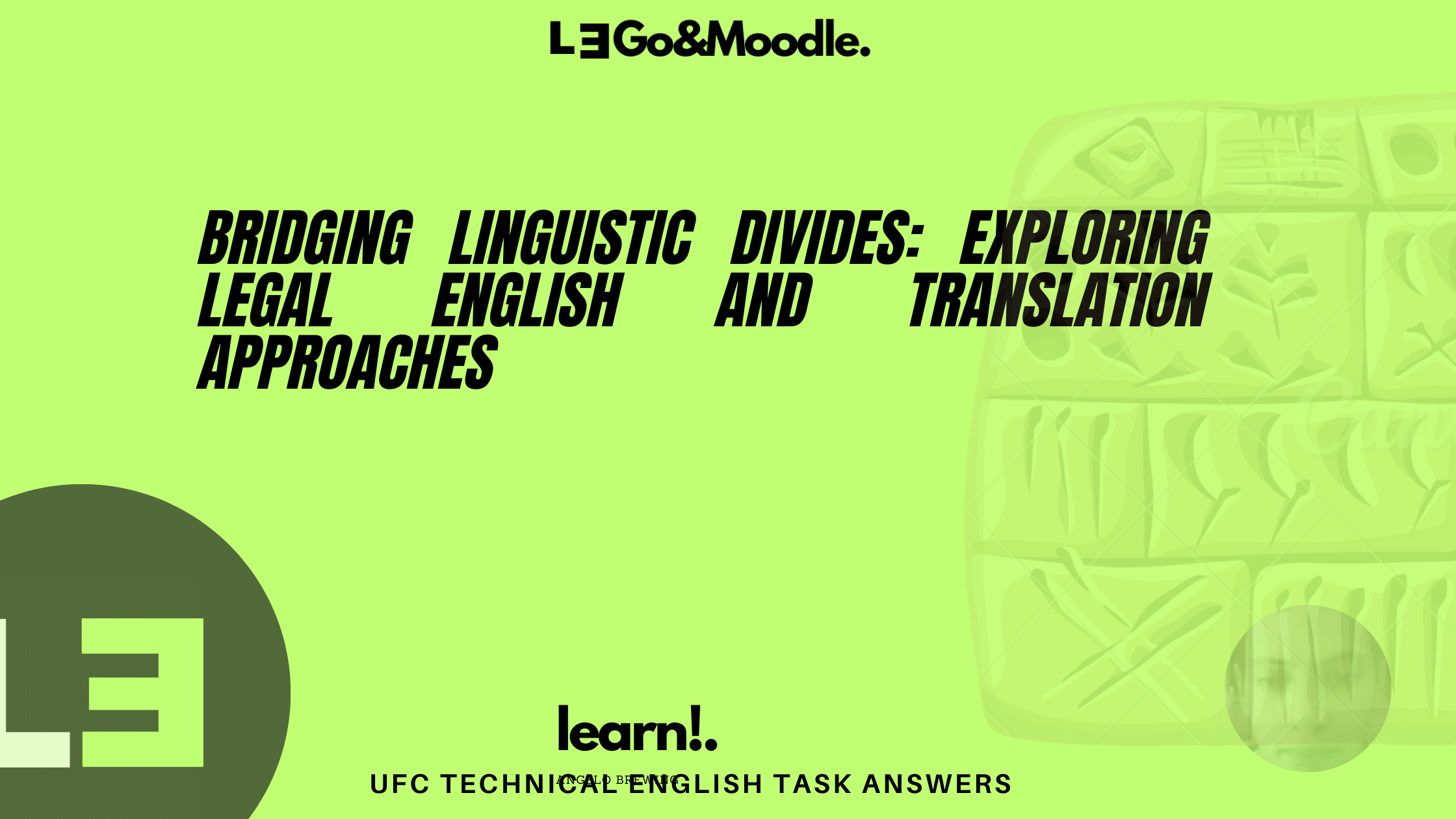Multiple-Choice Questions (QCM) on Legal English and Translation:
1. What is the primary purpose of the lesson on Legal English and Translation? a. Learning English grammar b. Developing understanding of translation issues in English/Arabic and Arabic/English c. Improving public speaking skills d. Enhancing mathematical abilities
Answer: b. Developing understanding of translation issues in English/Arabic and Arabic/English
2. According to the lesson, what is NOT true about translation? a. Translation involves capturing the essence and meaning of the source text. b. Translation is a one-way process. c. Translation is a mechanical task. d. Translation requires adaptation to the cultural and linguistic context of the target language.
Answer: c. Translation is a mechanical task.
3. What is emphasized in the paragraph about the Process and Product of Translation? a. Translation is only about linguistic proficiency. b. Translation is a one-way process. c. Translation is both a dynamic process and a tangible product. d. Translation is solely a mechanical rendition.
Answer: c. Translation is both a dynamic process and a tangible product.
4. How does the lesson define Legal Translation? a. Legal translation involves translating only scientific texts. b. Legal translation is the language of law according to Mellinkoff. c. Legal translation deals with literary documents. d. Legal translation focuses on translating everyday conversations.
Answer: b. Legal translation is the language of law according to Mellinkoff.
5. What is the key difference between Legal and Technical Translation and Interpreting? a. Legal translation involves real-time communication in legal proceedings. b. Technical translation deals with contracts and court proceedings. c. Legal translation requires an understanding of specialized fields. d. Technical translation involves translating intricate information in scientific texts.
Answer: c. Legal translation requires an understanding of specialized fields.
6. According to the lesson, what is the focus of technical interpreting? a. Bridging linguistic gaps in legal proceedings b. Conveying legal nuances during technical events c. Transmitting intricate information in real-time d. Adapting cultural references in technical contexts
Answer: c. Transmitting intricate information in real-time
7. What is highlighted as paramount in both legal and technical translation and interpreting? a. Creative adaptation b. Real-time communication c. Cultural isolation d. Accuracy and specific language/terminology expertise
Answer: d. Accuracy and specific language/terminology expertise
Multiple-Choice Questions (QCM) on Translation Approaches and Concepts:
1. What is the primary objective of the lesson on translation approaches and concepts? a. Focusing solely on word-for-word substitution b. Developing an understanding of translation issues in only one direction c. Presenting the main theoretical approaches to translation d. Ignoring practical translation tools
Answer: c. Presenting the main theoretical approaches to translation
2. According to the lesson, what distinguishes translation from interpretation? a. Both are unidirectional processes b. Translation involves cultural considerations, while interpretation does not c. Interpretation is a tangible product, while translation is a dynamic process d. Translation captures the essence of the source text, while interpretation does not
Answer: b. Translation involves cultural considerations, while interpretation does not
3. What is NOT true about translation, according to the lesson? a. It requires creativity and linguistic finesse b. It involves a one-way bridge between languages c. It goes beyond literal meanings to convey emotions and cultural nuances d. It demands understanding and adapting cultural references for effective communication
Answer: b. It involves a one-way bridge between languages
4. How does the lesson describe the product of translation? a. A mechanical rendition b. A dynamic process c. A tangible output mirroring the essence of the source d. A process devoid of cultural considerations
Answer: c. A tangible output mirroring the essence of the source
5. In what way does the lesson emphasize the importance of understanding translation as an interplay between process and product? a. By excluding cultural awareness b. By solely focusing on linguistic proficiency c. By recognizing its intricate nature and role in bridging divides d. By ignoring the target language's linguistic nuances
Answer: c. By recognizing its intricate nature and role in bridging divides
6. According to the paragraph on Legal Translation, what documents are commonly translated in the legal field? a. Scientific research papers b. Literary novels c. Contracts and court proceedings d. Everyday conversations
Answer: c. Contracts and court proceedings
7. What is the main distinction between Technical and Legal Translation and Interpreting, as highlighted in the lesson? a. Technical translation deals with literary documents, while legal translation focuses on scientific texts. b. Legal translation involves real-time communication, while technical translation requires linguistic proficiency. c. Technical translation deals with complex technical content, while legal translation involves legal documents. d. Legal interpreting focuses on specialized jargon, while technical interpreting revolves around legal nuances.
Answer: c. Technical translation deals with complex technical content, while legal translation involves legal documents.






